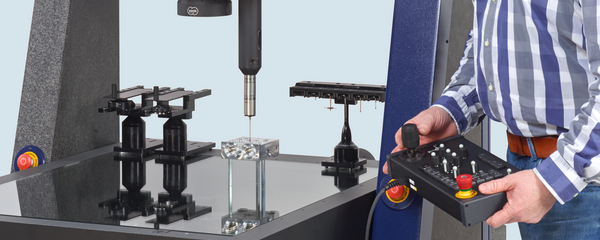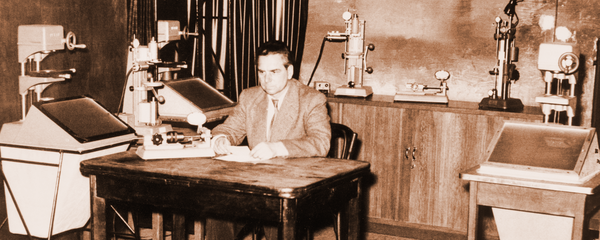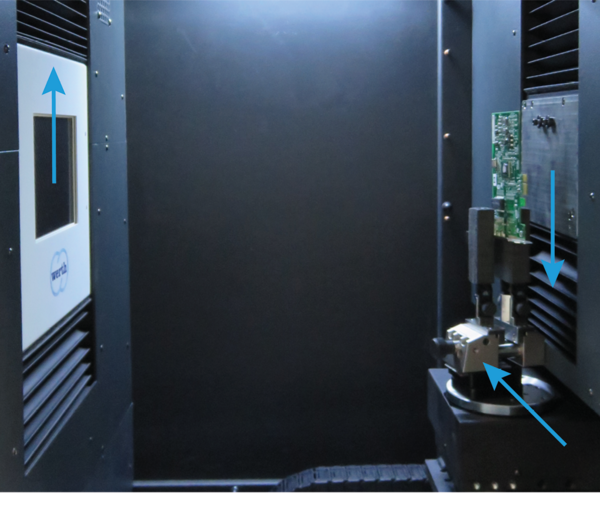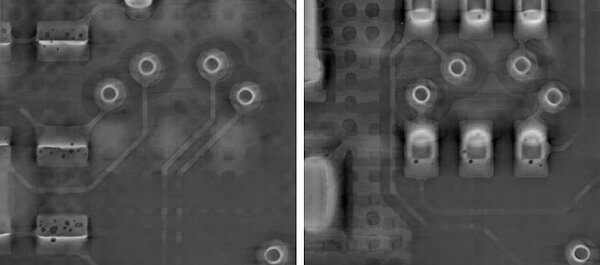In order to achieve a high resolution, the distance between the workpiece and the X-ray tube must be very small. If large, flat workpieces such as printed circuit boards are to be tomographed, the workpiece would then collide with the X-ray source when it is rotated to capture the radiographic images due to the large aspect ratio. Swing and planar laminography offer a solution, in which the angular range for capturing the radiographic images is greatly reduced or only moved in a planar manner.
In swing laminography, the workpiece is only rotated within a certain angular range, e.g. ±20 degrees. For planar laminography, the workpiece is moved by the X-rays with the detector and X-ray tube moving in opposite directions. Due to the conical shape of the X-rays, the angle of transmission changes. This virtual rotation of the workpiece provides sufficient information to reconstruct the volume of the workpiece. The lateral resolution in the various measuring planes is very high, defined by the selected magnification. The axial resolution is lower, which is usually not a problem in 2D applications.
Laminography is used, for example, for the analysis and measurement of printed circuit boards and electronic assemblies, the analysis of archaeological samples, 2D measurements of large sheet metal or flat plastic parts and for the measurement of bipolar plates.
-
Applications
- 3D free-form workpieces
- Extruded workpieces
- Molds
- Semiconductor workpieces
- Lithographic structures
- Metal-plastic composite workpieces
- Prismatic workpieces
- Punched and bent parts
- Packaging
- Shaft-Hub Connections
- Shafts and Axes
- Workpieces with micro-features
- Optics and Lenses
- Tools with precisely defined cutting edges
- Tools with complex or irregular cutting edges
- Gear wheels
- Cylindrical workpieces
- Industries
- Our products
- Werth service
- About Werth
- Careers
- Foundation
- Publications
- Downloads







